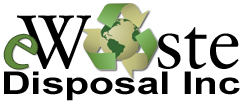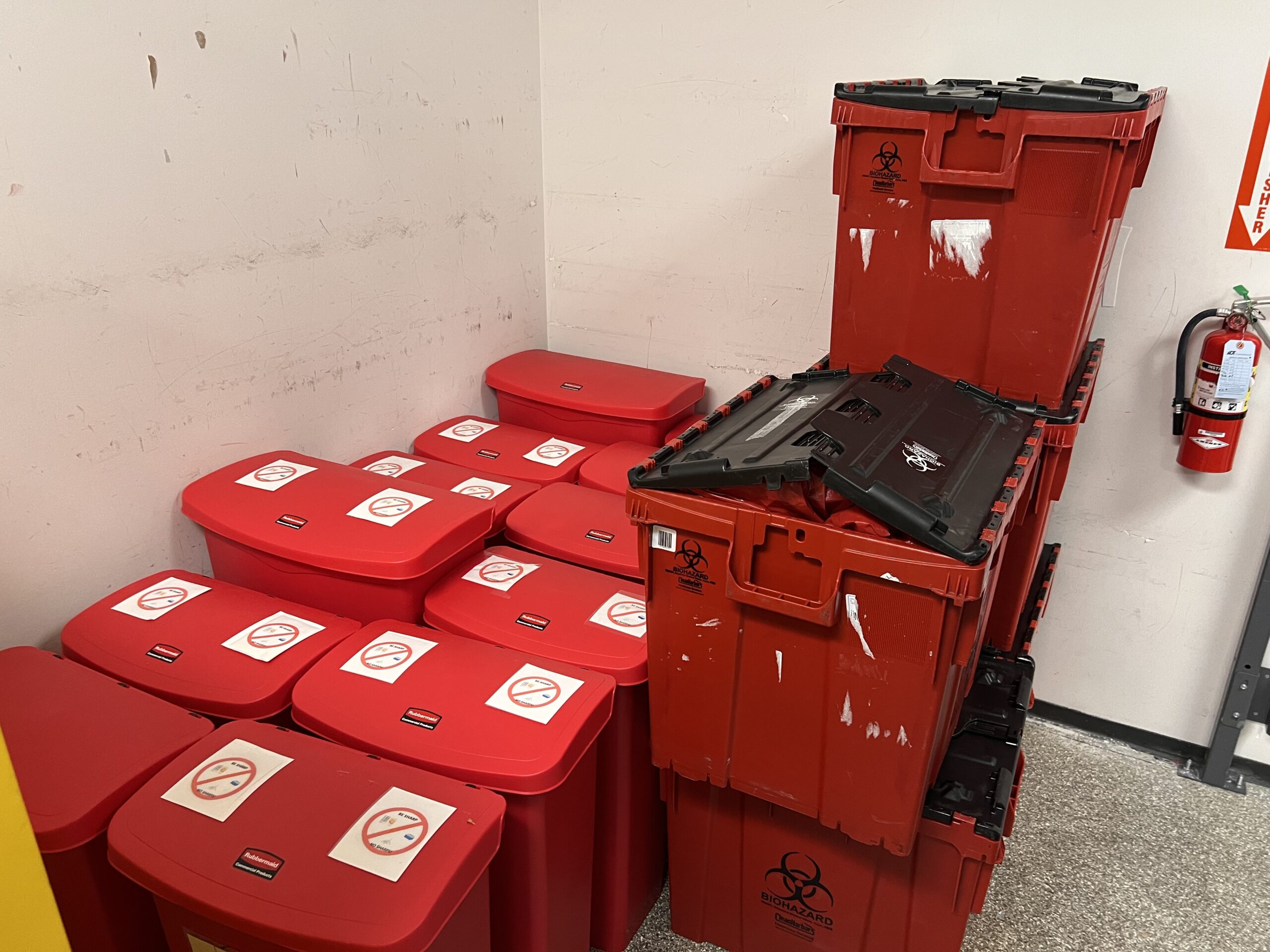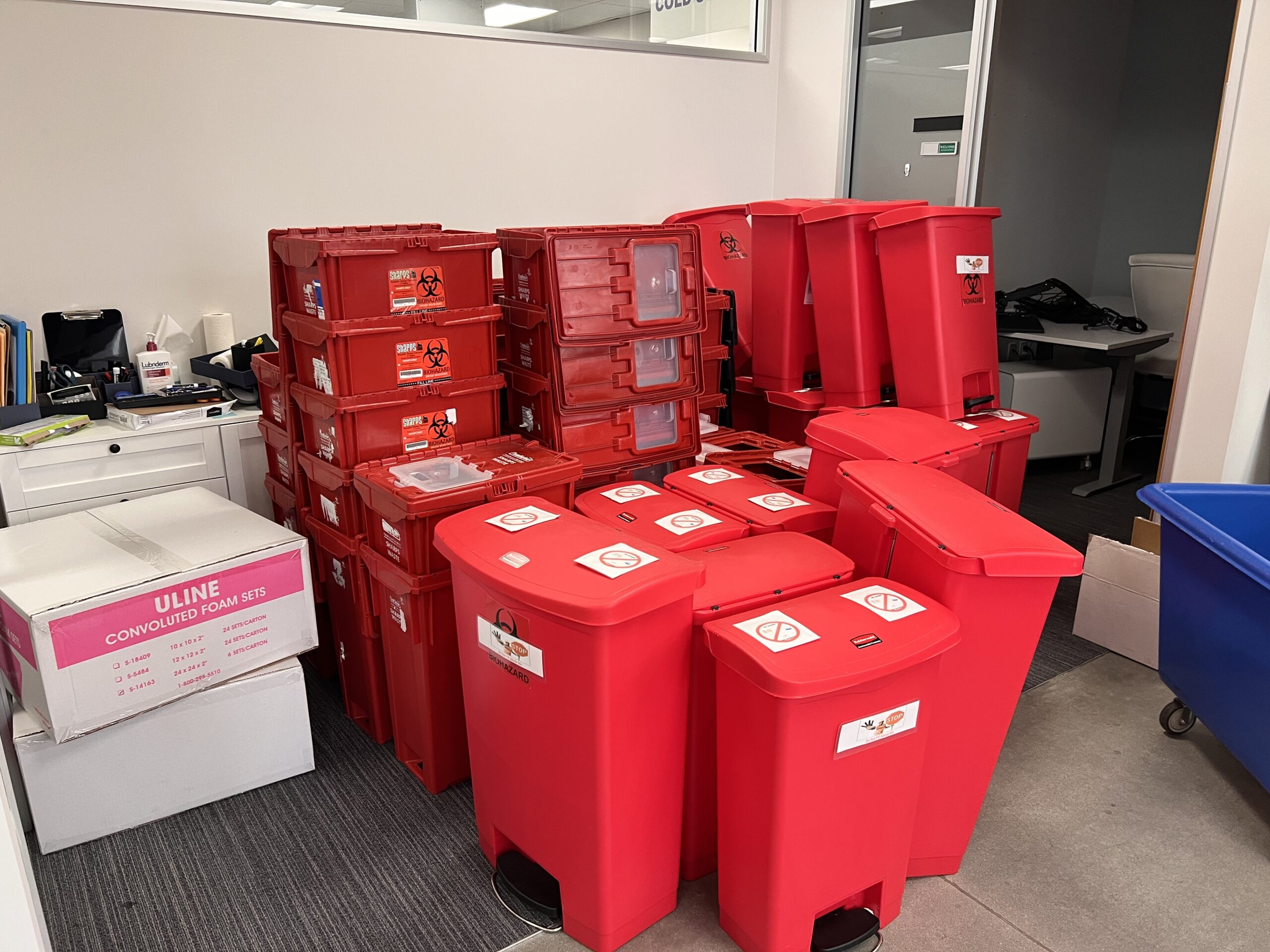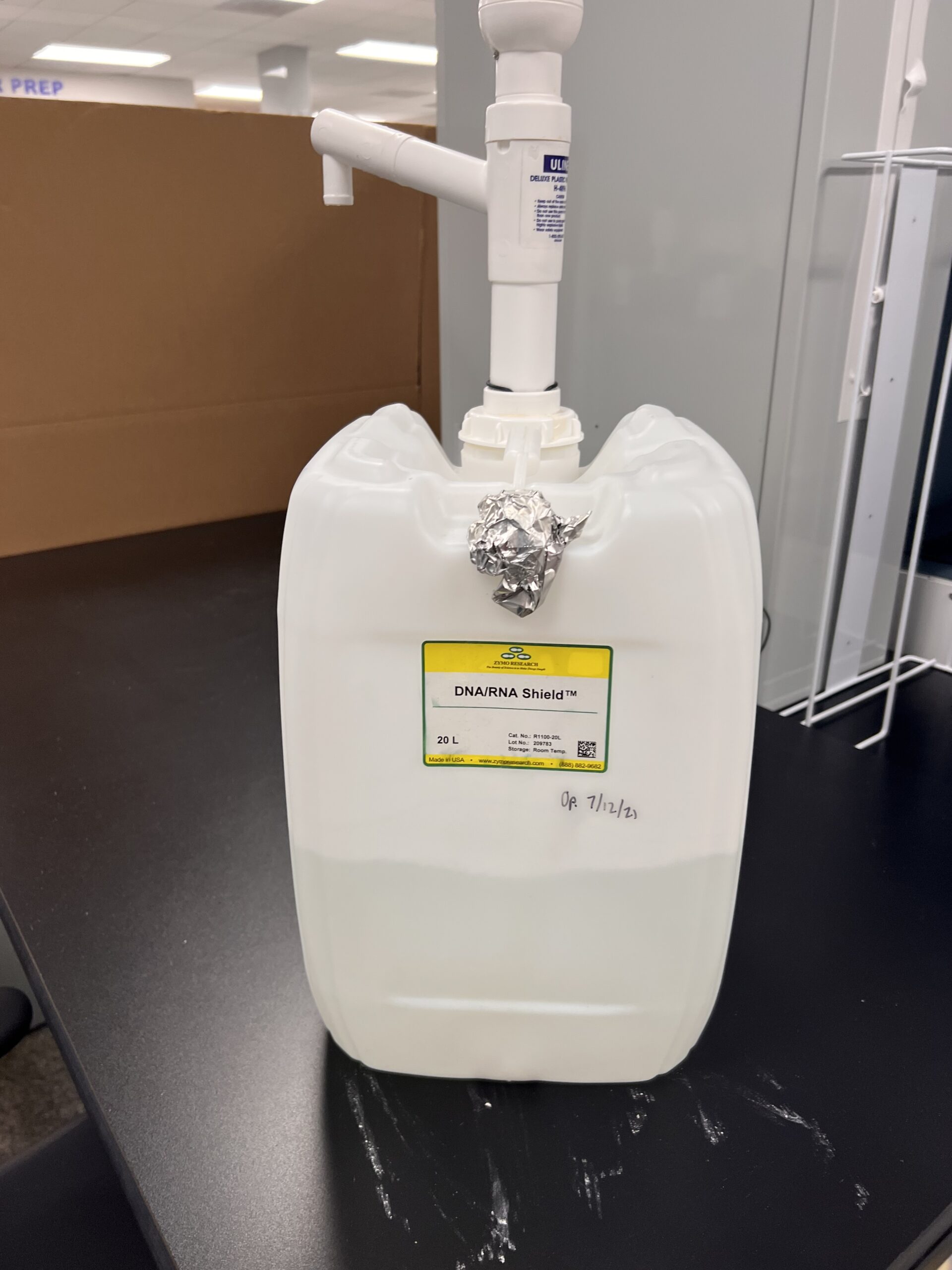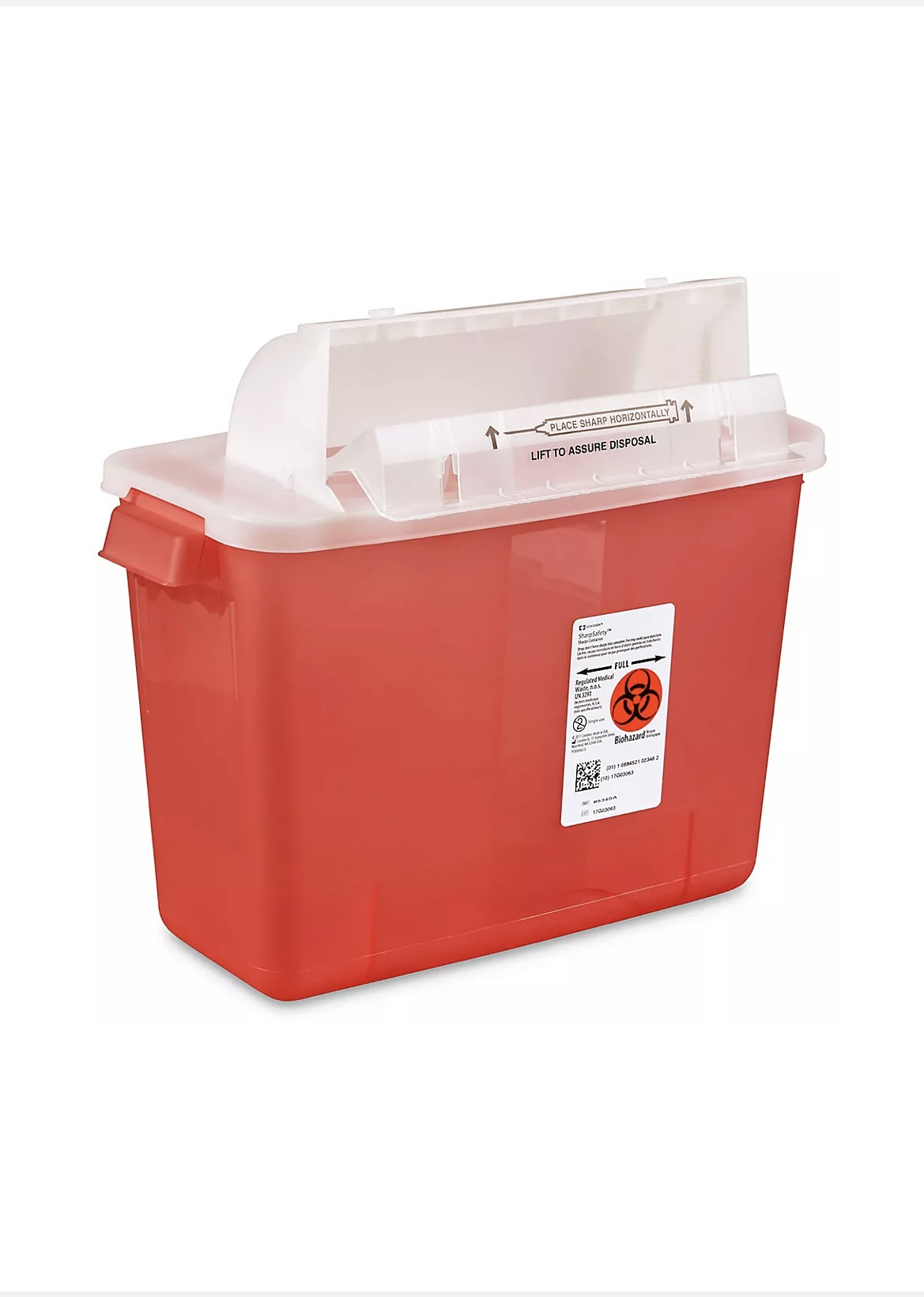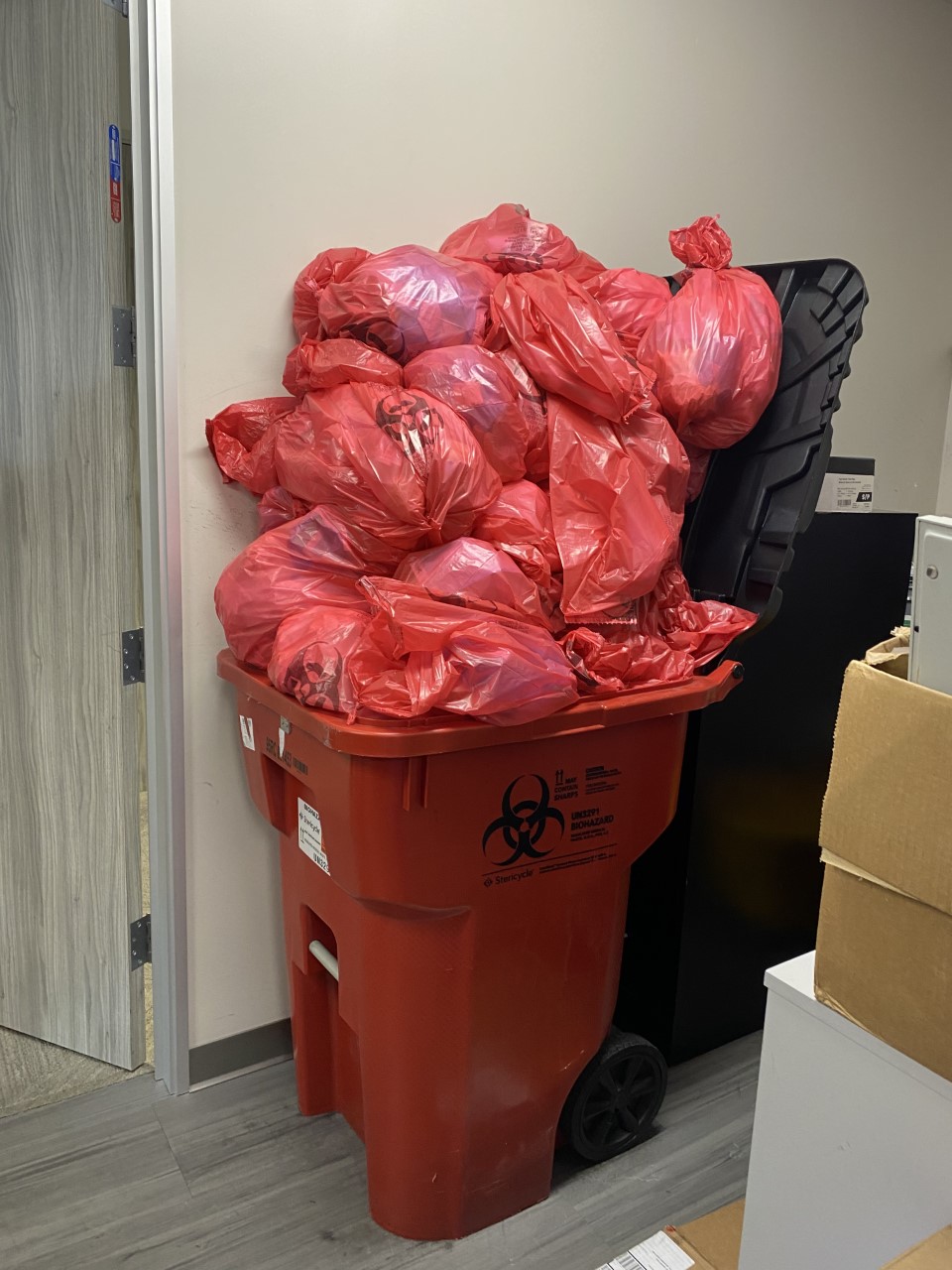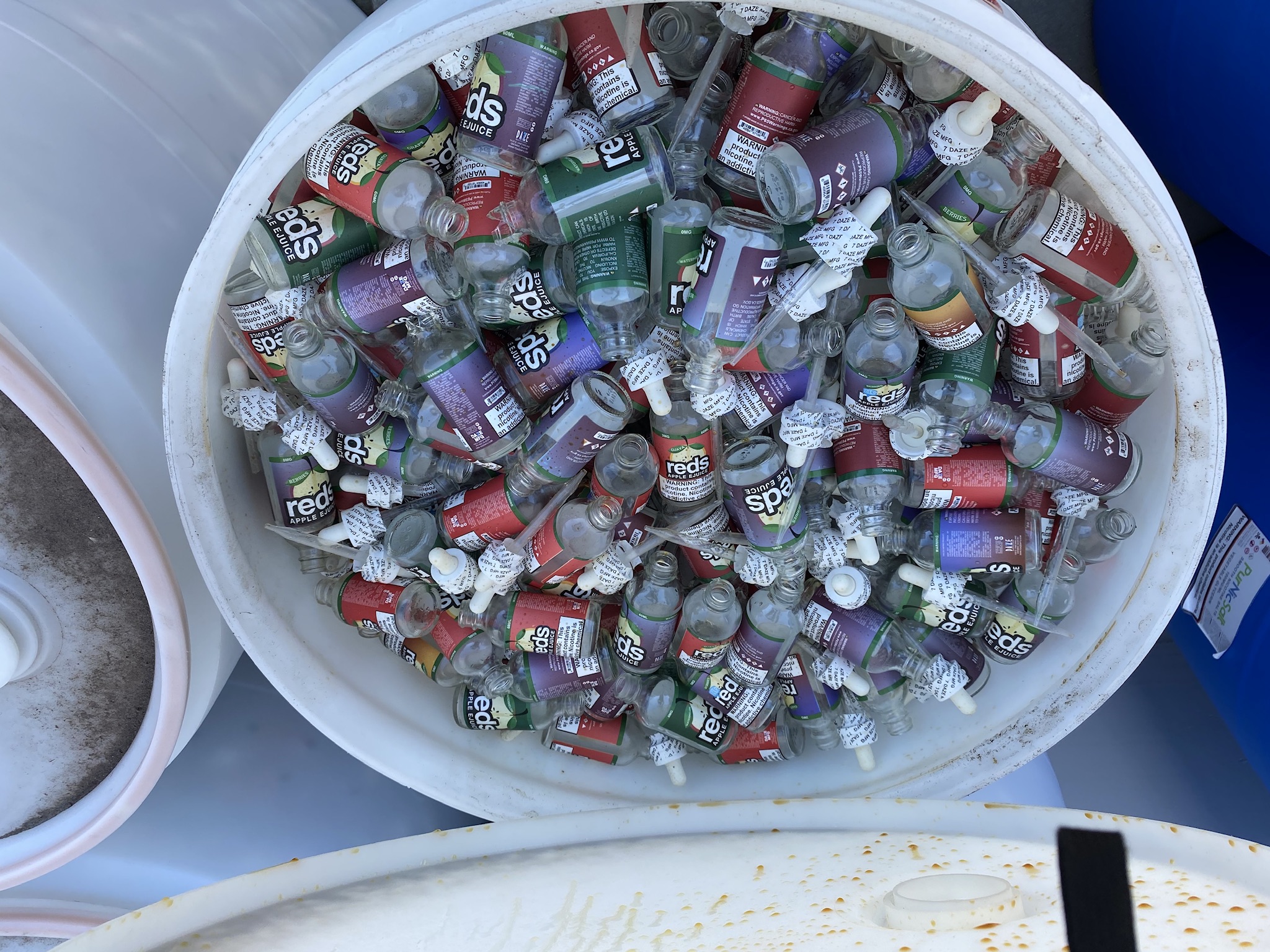A trusted bio waste medical service, providing medical waste pick-up and disposal services,
giving highest priority to protect people and the environment.
eWaste’s bio waste medical services include the following:
Medical Waste Disposal
Sharps, red bag, pathology, pharmaceutical and chemo waste disposal
Courteous and friendly drivers & customer support
Clear and concise invoices
Scheduled pick-ups
Medical waste supplies
Free Policy and Procedure Manuals for large and small quantity generators
Free state and federal approved containers
Free OSHA approved biohazardous signs
Free set-up of new customers
Free in-house training
DOCUMENT DOWNLOADS
Medical Waste Tracking PDF —– Click Here >>>
Related link for CA Gov Medical Waste —– Click Here >>>
eWaste Disposal, Inc
WASTE HANDLING PROCEDURES
EWD is a fully licensed hazardous and biohazardous waste transporter. We will provide you with all required documentation which you must maintain for your records. We will make all required reports to the state. All containers supplied by EWD meet regulatory requirements.
Generators are responsible for proper segregation, packaging, and labeling of waste. The following are procedures that must be followed in order for both generator and transporter to maintain compliance with all applicable regulations. Improperly packaged container or unacceptable waste may be denied or returned to the generator and there will be a fee charged for improper packaging. Please call our office if you wish to receive more detailed information on these regulations.
SHARPS WASTE
Sharps: Any object that is potentially contaminated or may become contaminated with bloodborne pathogens which can penetrate the skin or red bag
Includes but is not limited to needles, scalpels, slides, capillary tubes, broken glass, and dental wire
Must be placed in a sharps container (a rigid puncture-resistant container that, when sealed, is leak resistant and cannot be reopened)
Container must be kept upright at all times
Containers must be closed and locked when they become ¾ full (most containers have a full mark)
May not be transferred from one container to another
Sharps containers that are not closeable or have needles protruding may not be transported
Sharps in a red bag without being in a sharps container will not be removed from your facility
Non-sharps medical waste, mercury, extracted teeth, hazardous waste, and pharmaceuticals may not go in a sharps container
Containers should be transported in a rigid, non-porous, secondary containment (such as a 44-gallon plastic brute container) that islabeled with “BIOHAZARDOUS” with the international biohazard symbol visible from all lateral directions. PGII containers do not require secondary containment
PHARMACEUTICAL WASTE
Pharmaceutical: Any prescription or over-the-counter human or veterinary drug
Must be segregated from other wastes in an EXR approved rigid container that is labeled “PHARMACEUTICAL WASTE FOR INCINERATION ONLY”
May not be put down drain or trash
DEA scheduled drugs must be handled separately and cannot be included in typical pharmaceutical waste
TRACE CHEMOTHERAPY WASTE
Defined as: Waste contaminated through contact with, or having previously contained chemotherapeutic agents including but not limited to gloves, disposable gowns, towels, empty intravenous solution bags and attached tubing
Must be segregated from other wastes in a rigid plastic chemotherapy waste container or in a yellow chemotherapy bag within secondary containment. All containers and bags must be labeled with “CHEMOTHERAPY WASTE FOR INCINERATION”
AMALGAM WASTE
Scrap (dry or non-contact) amalgam and amalgam particles or empty amalgam capsules
Contact Amalgam including: extracted teeth, sludge from chair side traps, disposable traps, pump filter canisters, and sludge fromamalgam separator wastewater treatment units
Must be placed in airtight container labeled with purple “UNIVERSAL WASTE” label that is properly filled out
Amalgam waste and filters may not be rinsed down the drain, thrown in the trash, or put into sharps containers or red bags.
FIXER AND DEVELOPER WASTE
Spent photographic solutions
Must be in DOT approved container containing a green “EXCLUDED RECYCLABLE MATERIAL” label that is properly filled out
Los Angeles County requires separate containers for fixer and developer
STERILIZING SOLUTIONS
Vapo Steril or Gluteraldehyde based solutions used for instrument sterilization
Must be in a DOT approved container labeled with a yellow “HAZARDOUS WASTE” label that is properly filled out
OTHER HAZARDOUS WASTES
Call for containment, storage, and labeling requirements
RED BAG WASTE
Defined as:
Any item that contains liquid or semi-liquid blood or other potentially infectious materials (OPIM)
Contaminated items that would release blood or OPIM if compressed
Items with dried blood or OPIM
Any human tissues
Red plastic bags of a specified thickness that will be leak and tear resistant that is labeled with the international biohazard symbol and the word “BIOHAZARDOUS”
Must be in rigid, non-porous, secondary containment (such as a 44-gallon plastic brute container
Each bag must be tied with a “goose-neck” closure done by gathering and twisting the bag and securing it with a knot or tie
Bags must be tied prior to transportation to prevent expulsion of contents and may not be overfilled
PATHOLOGY WASTE
Pathology: Human or animal body parts, organs, tissues and surgical specimens (any formaldehyde, formalin, or preservative must be drained off of all tissues and handled as a separate waste stream)
Must in a red bag and in secondary containment that is labeled “PATHOLOGY WASTE FOR INCINERATION”
Bag must be tied with “goose-neck” closure to prevent expulsion of contents prior to transportation
WASTES NOT ACCEPTED
Radioactive materials
Complete human remains
Untreated category A Infectious Substances
Mercury containing devices (mercury thermometers, sphygmomanometers, lab or other medical devices)
DEA scheduled drugs
Acutely hazardous wastes
Accumulation Requirements
Red bag waste under 20 pounds a month: 30 days from start of accumulation
Red Bag waste over 20 pounds a month: 7 days from the start of accumulation
Any red bag with an odor that is considered a nuisance must be disposed of immediately
Sharps waste: 30 days from being closed (must be closed with ¾ mark reached)
Pharmaceuticals, Fixer/developer, amalgam, sterilizing solutions: 365 from start of accumulation or 90 days from point container is full whichever is sooner.
OSHA REQUIREMENTS
Use Universal Precautions (assume all blood and bodily fluid is known to be infectious for a bloodborne pathogens such as Hepatitis or HIV)
Have exposure control plan
Minimize employee exposure with work practice controls and use of personal protective equipment
Contaminated materials should be disposed of immediately in appropriate containers with proper color and labeling.
The hepatitis B vaccination series must be made available at no cost to all employees with occupational exposure within 10 days of employment
All employees with potential occupational exposure should be trained with a minimum of explanation of the bloodborne pathogens standard, examples of proper labels and containers, description of bloodborne disease, explanation of modes of transmission, explanation of the exposure control plan, methods to reduce exposure, and procedure to follow if exposure incident occurs
Following an exposure incident a confidential medical evaluation must be made available at no cost to the employee
Maintain sharps injury log of any percutaneous injuries from contaminated sharps
DOCUMENT DOWNLOADS
eWaste’s Bio Waste Handling Procedures —– Click Here >>>
Bio Waste Transporter—– Click Here >>>
